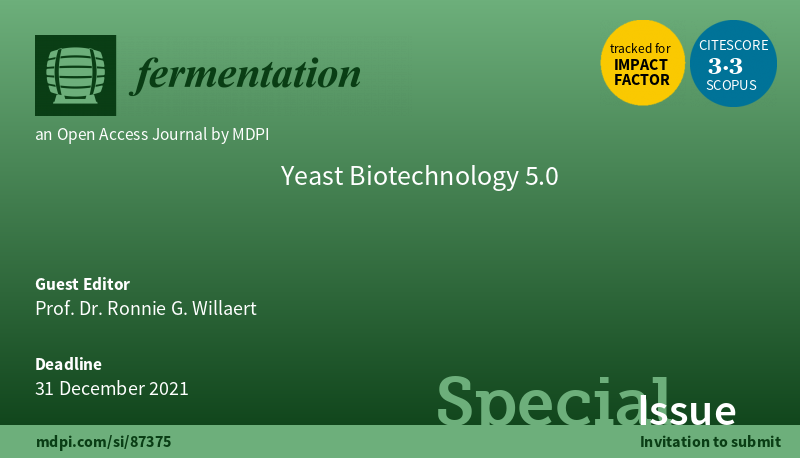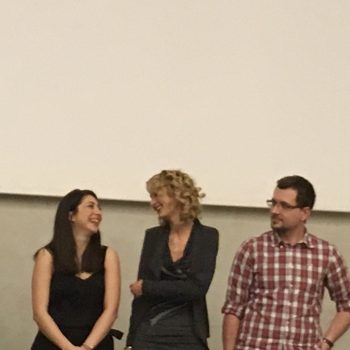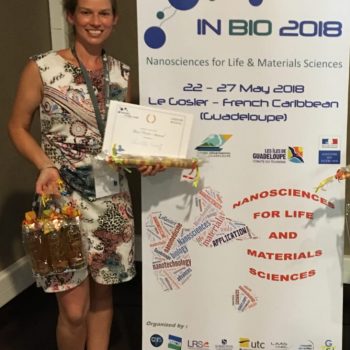Best poster prize for Charlotte Yvanoff
Congratulations to Charlotte for her 1st place in the poster prize competition at the XXIth (2019) Linz Winterworkshop with her poster entitled “Printing of bone cell networks in microfluidic chips…
NANO
NANO is an International Joint Research Group (IJRG) between the Vrije Universiteit Brussel (VUB) (Brussels, Belgium) and Ecole Polytechnique de Lausanne (EPFL). NANO is composed of members of the Research Group Structural Biology Brussels (prof. Ronnie Willaert) at the VUB, the Alliance Group UGhent-VUB NanoMicrobiology (NAMI) (prof. Bart Devreese and prof. Ronnie Willaert) and the Laboratoire de Physique de la Matière Vivante (LPMV) (Dr. Sandor Kasas, Prof. Giovanni Dietler) at the Ecole Polytechnique Fédérale de Lausanne (EPFL) (Lausanne, Switzerland).
The overall goal of IJRG NANO is to perform cell biophysics and molecular biophysics research using an integrated approach of nanotechnology techniques and biomathematics on biological and medical relevant cell systems. We will focus on the integration of bionanotechnological analysis (AFM, high-resolution microscopy, nanomotion vibration analysis ), biomicrofluidic and biofabrication techniques (soft and electron beam lithography), and biomathematical analysis (image analysis, computational biology, bioinformatics, network biology).
NAMI
NAMI is an Alliance Research Group between the Single-molecule Biophysics research group (SBB) of prof. Ronnie Willaert at the Vrije Universiteit Brussel (Brussels, Belgium) and the Laboratory of Microbiology of prof. Bart Devreese at Ghent University (Ghent, Belgium).
NAMI focusses on cellular and molecular biophysical research on microorganisms or their constituents by using an integrated approach of nano manipulation and nano analysis techniques. Nano techniques that allow to study single molecules (“single molecule analysis“) and cells ( “single cell analysis”) and their mutual interactions, are being developed.
New publication
Yvanoff C, Willaert RG. Development of bone cell microarrays in microfluidic chips for studying osteocyte-osteoblast communication under fluid flow mechanical loading. Biofabrication. 2022 Feb 22;14(2). doi: 10.1088/1758-5090/ac516e. PMID: 35108702.


Congratulations to Charlotte for her 1st place in the poster prize competition at the XXIth (2019) Linz Winterworkshop with her poster entitled “Printing of bone cell networks in microfluidic chips…

Congratulations to Charlotte Yvanoff for the first poster prize at the ASC Nano In Bio conference (22-27 May 2018)!!!

Yvanoff C, Willaert RG. Development of bone cell microarrays in microfluidic chips for studying osteocyte-osteoblast communication under fluid flow mechanical loading. Biofabrication. 2022 Feb 22;14(2). …

Welcome to the website of the research groups NANO and NAMI. Check our blog/news regularly for work in progress, new projects and new publications related to these two research groups. Please let…
NANO
NANO is an International Joint Research Group (IJRG) between the Vrije Universiteit Brussel (VUB) (Brussels, Belgium) and Ecole Polytechnique de Lausanne (EPFL). NANO is composed of members of the Research Group Structural Biology Brussels (prof. Ronnie Willaert) at the VUB, the Alliance Group UGhent-VUB NanoMicrobiology (NAMI) (prof. Bart Devreese and prof. Ronnie Willaert) and the Laboratoire de Physique de la Matière Vivante (LPMV) (Dr. Sandor Kasas, Prof. Giovanni Dietler) at the Ecole Polytechnique Fédérale de Lausanne (EPFL) (Lausanne, Switzerland).
The overall goal of IJRG NANO is to perform cell biophysics and molecular biophysics research using an integrated approach of nanotechnology techniques and biomathematics on biological and medical relevant cell systems. We will focus on the integration of bionanotechnological analysis (AFM, high-resolution microscopy, nanomotion vibration analysis ), biomicrofluidic and biofabrication techniques (soft and electron beam lithography), and biomathematical analysis (image analysis, computational biology, bioinformatics, network biology).
NAMI
NAMI is an Alliance Research Group between the Single-molecule Biophysics research group (SBB) of prof. Ronnie Willaert at the Vrije Universiteit Brussel (Brussels, Belgium) and the Laboratory of Microbiology of prof. Bart Devreese at Ghent University (Ghent, Belgium).
NAMI focusses on cellular and molecular biophysical research on microorganisms or their constituents by using an integrated approach of nano manipulation and nano analysis techniques. Nano techniques that allow to study single molecules (“single molecule analysis“) and cells ( “single cell analysis”) and their mutual interactions, are being developed.


Congratulations to Charlotte for her 1st place in the poster prize competition at the XXIth (2019) Linz Winterworkshop with her poster entitled “Printing of bone cell networks in microfluidic chips…

Congratulations to Charlotte Yvanoff for the first poster prize at the ASC Nano In Bio conference (22-27 May 2018)!!!

Yvanoff C, Willaert RG. Development of bone cell microarrays in microfluidic chips for studying osteocyte-osteoblast communication under fluid flow mechanical loading. Biofabrication. 2022 Feb 22;14(2). …

Welcome to the website of the research groups NANO and NAMI. Check our blog/news regularly for work in progress, new projects and new publications related to these two research groups. Please let…